3 Best Pushup Variations For Biceps (with Pictures!)
For calisthenic athletes and at-home exercisers, finding sufficient biceps training has always been a problem.
Exercises normally used for such purposes (like the pull-up and chin-up) may be too heavy or too tiring to perform in volume, limiting the options one may have available to them.
However, one possible workaround bodyweight exercisers have turned to is the push-up; a classic calisthenic movement that - when performed with a few modifications - is capable of working the biceps to an effective degree.
While the conventional push-up does not train the biceps enough to cause any significant growth, performing a similar variation exercise can allow for the biceps to be trained alongside other muscles like the chest or triceps.
Does the Regular Push-Up Work Biceps?
In truth, the conventional push-up is actually quite poor for training the biceps. Because of the position of the hands and elbows relative to the torso, the biceps will only be contracted in a static or isometric capacity.
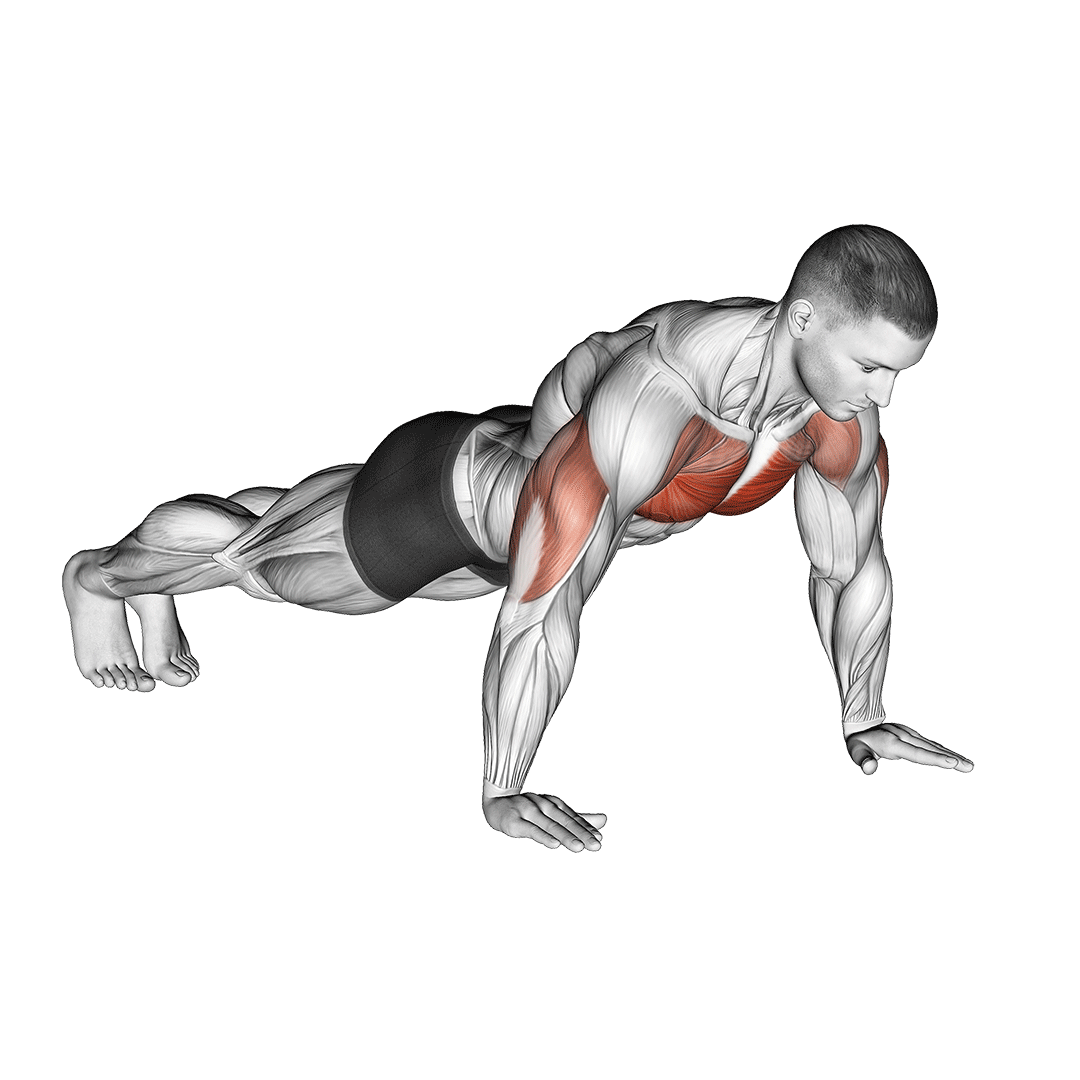
Not only do conventional push-ups fail to recruit the biceps in any meaningful way, but they also place much of the resistance on larger and better-positioned muscle groups, meaning that very little growth would occur, even if the biceps were being dynamically contracted.
Fortunately, modifying the push-up in such a way that they are recruited in a dynamic manner is actually quite easy, and will only require minor changes in stance so as to place the biceps in a position where they may contract.
This is primarily achieved by rotating the hands in the opposite direction - although setting them closer together may be used to stimulate the biceps as well.
What Muscles do Regular Push-Ups Work?
Instead of working the biceps, regular push-ups will train muscles like the deltoids, pectorals and triceps - some of which are actually antagonists to the bicep, and are often programmed to be trained in separate sessions as a result.
How Are the Biceps Worked by Exercises?
The biceps brachii are part of a larger group of muscles known as the “elbow flexors”, meaning that they directly contribute to the flexion biomechanic of the elbows (below) alongside other responsibilities.

As such, any exercise that features resistance opposing flexion of the elbows will recruit the biceps in a dynamic capacity - unlike in the push-up, where the resistance is directly in-line with the arms and as such targets the triceps instead.
Exercise Mechanics that Recruit the Biceps
One may note that nearly all biceps exercises feature the same set of mechanics and angle of resistance; with movements like the chin-up or bicep curl being among the most effective biceps movements available.
While there aren’t any push-up variations that come close to replicating the characteristics of chin-ups or bicep curls, altering the exercise by reversing the position of the hands or changing the angle of resistance in relation to the elbows is often sufficient to effectively recruit the biceps.
Push Ups for Biceps
1. Reverse Grip Push-Ups
The first and arguably most effective push-up for biceps is the reverse grip push-up; simply a conventional push-up performed with the fingers pointing in the opposite direction (towards the feet).
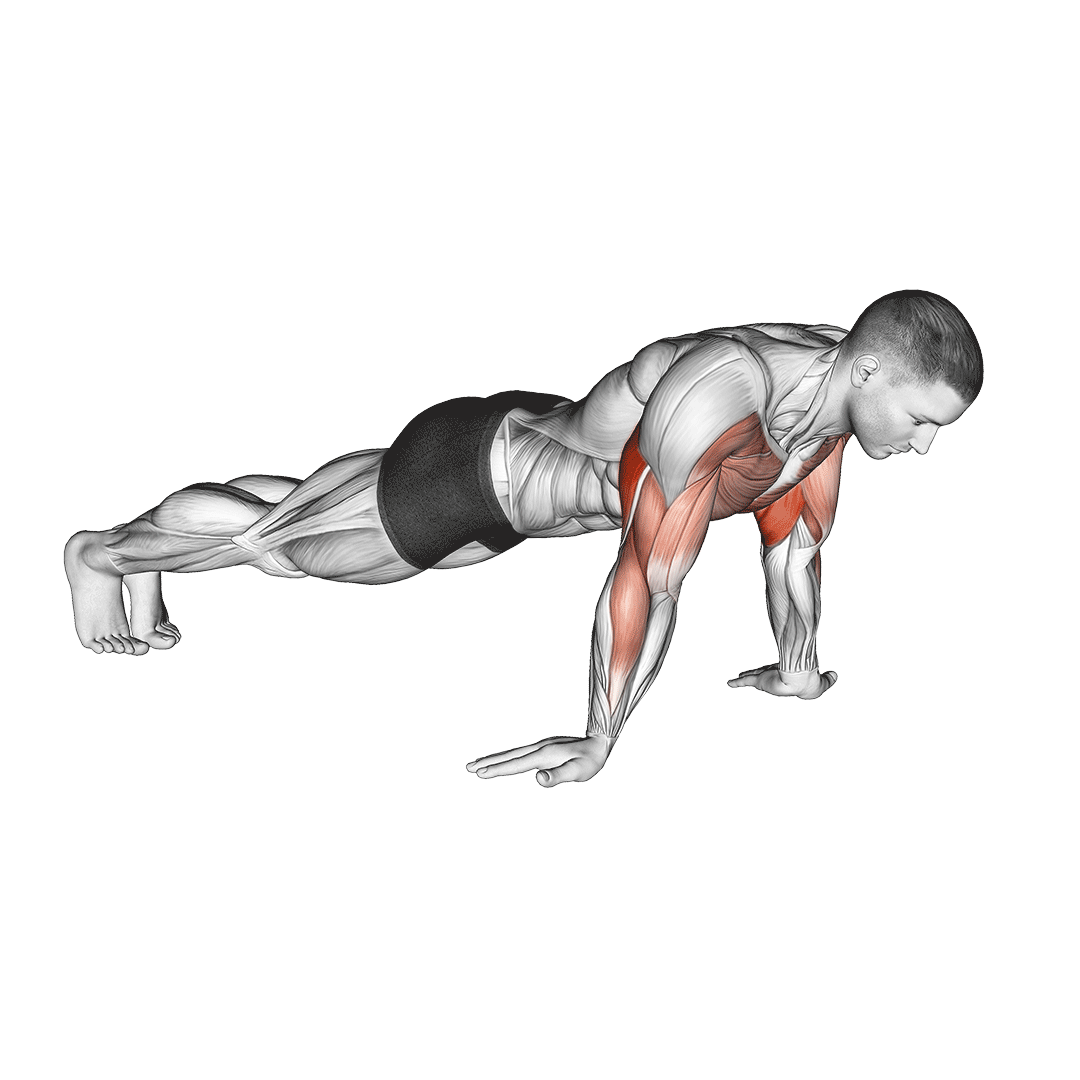
This alters the mechanics of the movement, forcing the biceps to contract as opposing resistance is placed against the elbows while the hands are in a supinated position - thereby contracting the biceps both isometrically and dynamically without the need for advanced exercise familiarity or additional equipment.
Effectiveness as a Biceps Exercise
So long as wrist mobility is not a limiting factor, exercisers will find that the reverse grip push-up is one of the best push-up variations for training their biceps - allowing for excellent biceps stimulation without foregoing the usual muscular recruitment of push-ups.
Muscles Worked
Reverse grip push-ups train the biceps, brachioradialis, triceps brachii, pectoral muscles and the anterior head of the deltoids.
How-to:
To perform a repetition of reverse grip push-ups, the exerciser will enter the conventional plank stance on the floor - only with the hands set further behind the shoulders and the fingers pointing backwards. The core must remain contracted and the torso relatively parallel to the floor.
From this position, the exerciser will then bend at the elbows and lower their torso towards the ground, taking extra care to ensure that the elbows are not flaring or bending in a potentially dangerous manner.
Once the chest is within several inches of touching the floor, the exerciser will then push through the palms of their hands, squeezing the biceps as the elbows extend. Once they have returned to the starting plank position, the repetition is complete.
2. Archer Push-Ups
For a more advanced biceps-training push-up, the archer push-up is the ideal variation of choice.
While the archer push-up is primarily used as a chest-training exercise, it nonetheless recruits the biceps in a manner that other push-up variations do not - thereby allowing exercisers to include the biceps in their workout while also training the pectorals.
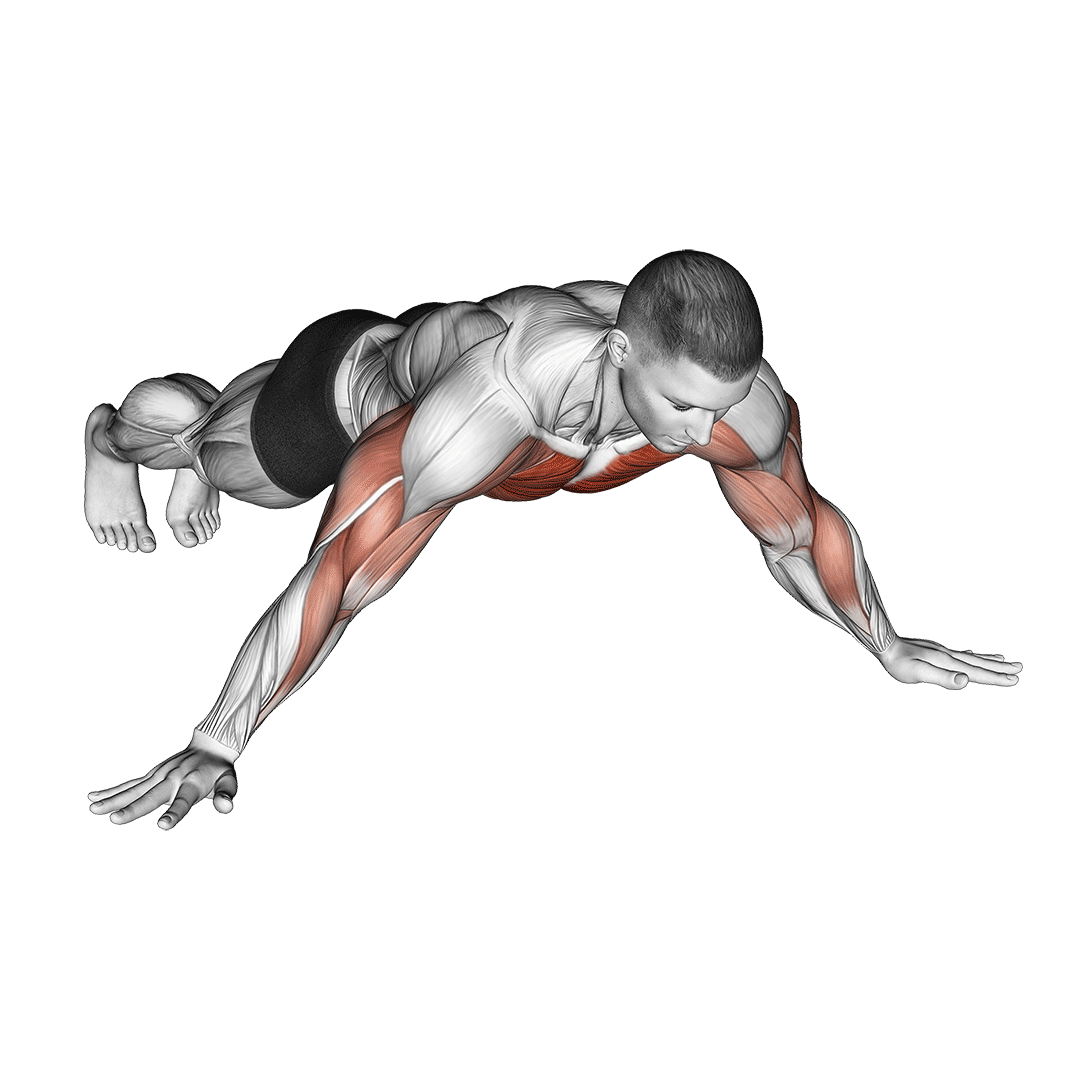
Like the conventional push-up, archer push-ups are a multi-joint compound exercise performed at high volume.
Where the two exercises differ however, is in the time under tension and intensity of each repetition, as the archer push-up will produce far greater training intensity and thereby greater development of the biceps.
Effectiveness as a Biceps Exercise
Though archer push-ups won’t work the biceps to the same range of motion as other variations, they make up for this deficit by placing far more of the body’s weight atop one arm at a time - thereby increasing the intensity to which the biceps are worked.
Muscles Worked
Archer push-ups work the muscles of the triceps, the anterior section of the deltoid muscles, the triceps brachii, the pectorals, the brachialis and the biceps brachii.
How-to:
To perform a repetition of the archer push-up, the exerciser will enter the standard plank stance with their hands set wider than shoulder-width apart. The core should remain contracted throughout the repetition, and the shoulders maintained at a neutral rotation.
To begin, the exerciser will bend with one elbow and lower their chest towards the same arm - stretching out the opposite arm as they do so. The torso will reach maximum depth when it is alongside the forearm, with the other arm nearly parallel to the floor so as to maintain balance.
From this position, the exerciser will then push through their palms, rising back into the plank position before repeating the motion with the opposite side of the body.
3. Diamond Push-Ups
Similar to narrow or close-grip push-ups, diamond push-ups are yet another type of push-up that includes the biceps in its muscular recruitment pattern.
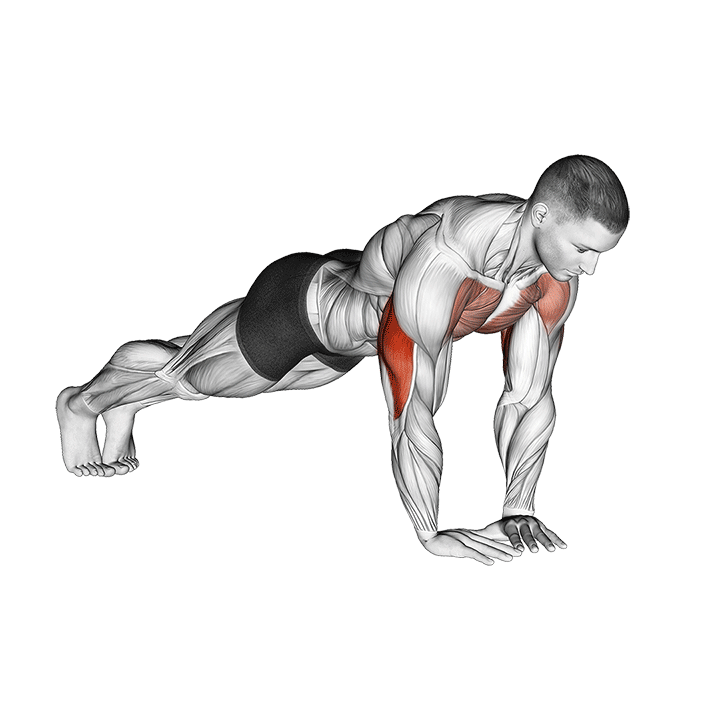
Unlike other push-up variations that work the biceps, the diamond push-up is more of an incidental biceps exercise, rather than one that is specifically performed for training the biceps.
This is primarily because the majority of biceps recruitment is of an isometric capacity, and as such is unlikely to result in a significant amount of hypertrophy.
Nonetheless, the diamond push-up is an excellent inclusion into any calisthenic workout that aims to target the biceps alongside the rest of the upper body, and is a highly effective exercise in its own right.
Effectiveness as a Biceps Exercise
The diamond push-up is admittedly less effective for training the biceps than archer or reverse grip push-ups, but can nonetheless stimulate them to a moderate degree. It is best used in situations where other exercises already fatigue the biceps significantly, such as in workout sessions that include pull-ups or rows.
Muscles Worked
Diamond push-ups train the triceps brachii, the pectorals, the anterior head of the deltoids and the biceps brachii.
How-to:
To perform a repetition of diamond push-ups, the exerciser will enter a plank stance on the floor, setting their hands close together beneath the chest, fingers splayed.
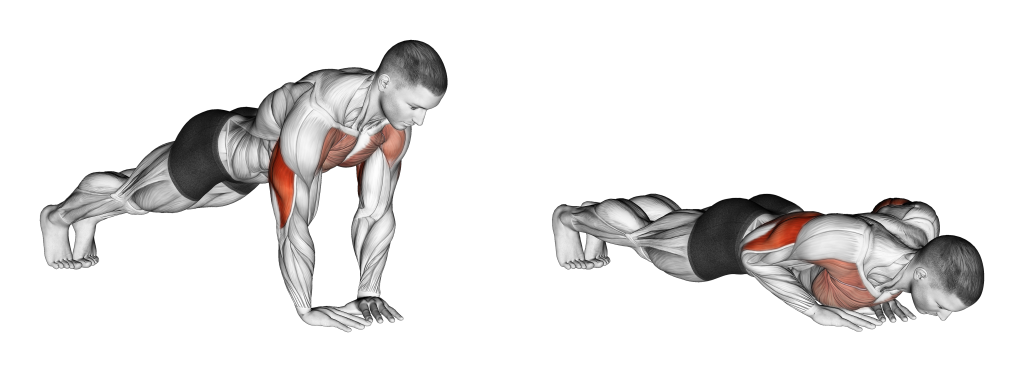
Bending at the elbows, the exerciser will then lower their torso towards the floor, focusing on squeezing the muscles of the arms as they do so.
Once the chest is within several inches of touching the ground, they will then push through the palms of their hands, extending the elbows and thereby completing the repetition.
Other Bodyweight Exercises for Biceps
If you wish to pair your push-ups with an exercise of similar characteristics, try the following bodyweight movements out.
1. Chin-Ups and Pull-Ups
Perhaps the most iconic bodyweight biceps exercises are the pull-up and chin-up - two back exercises that train the back alongside the biceps to a high level of intensity.

Either exercise meshes perfectly with push-ups when programmed in the same workout session, as they largely train entirely separate muscle groups.
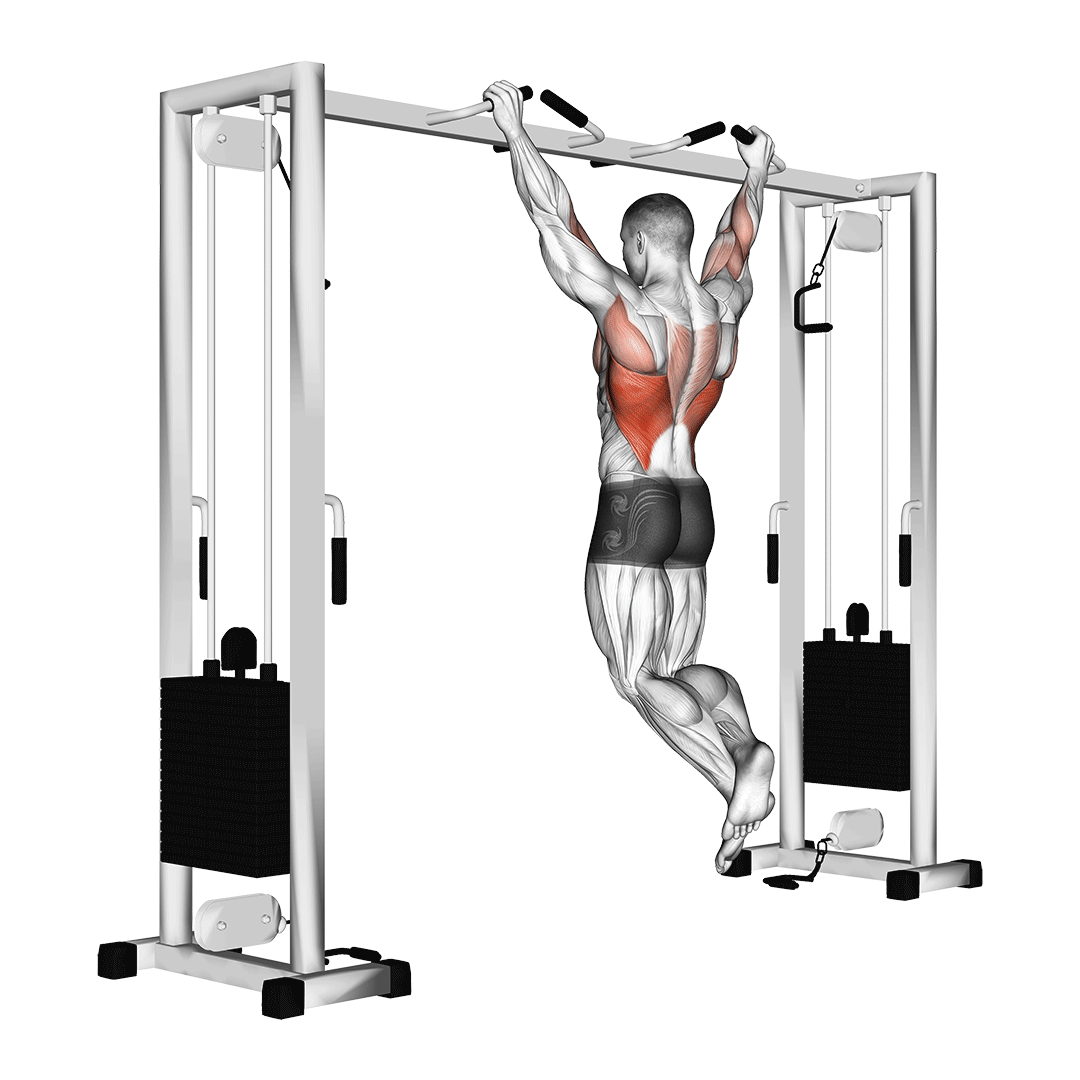
Both chin-ups and pull-ups train the muscles of the lats, trapezius, the posterior head of the deltoids and the biceps - with chin-ups working the biceps to a greater degree, and pull-ups working the back muscles to a higher intensity.
2. Inverted Rows
For exercisers without access to a pull-up bar, one possible solution is to instead perform inverted rows - of which train the biceps alongside other muscles like the lats, trapezius and posterior deltoid head.
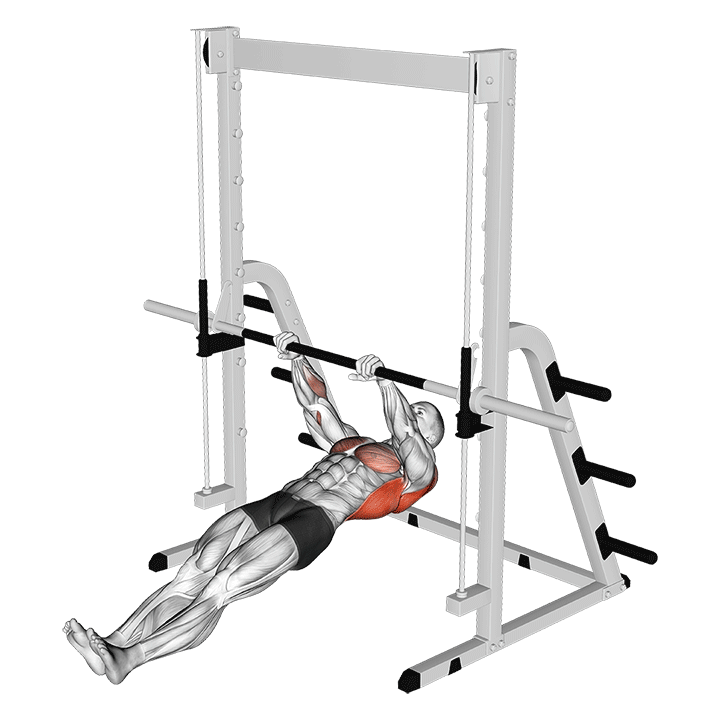
Inverted rows are a multi-joint compound exercise involving the exerciser suspending themselves from an object and “rowing” their own body in order to train the back and biceps.
Much like chin-ups and pull-ups, inverted rows mesh quite well when performed with push-ups in the same workout, and will generally train separate muscles.
3. Bodyweight Bicep Curls
One often overlooked calisthenic bicep exercise is that of the bodyweight bicep curl; an isolation exercise that involves the exerciser leveraging their leg against their biceps so as to produce resistance - all without the need for dumbbells or barbells.
To do so, the exerciser need only place their palm beneath their thigh, pressing downwards with the leg until sufficient resistance is met.
Unlike other bodyweight exercises that train the biceps, the bodyweight curl is easy to program and will not train any muscle other than the biceps - allowing it to be included into nearly every calisthenic workout without the need for extensive alteration.
Frequently Asked Questions (FAQ)
What Push-Ups Work the Biceps and Triceps?
While most push-up variations will effectively train the triceps, a push-up variation that targets the biceps is rare. For the most part, your choices will be limited to reverse grip push-ups, diamond push-ups and archer push-ups.
While there are several other kinds of push-ups that also work the biceps, these three variations are the most accessible and will allow for dynamic contraction of the biceps.
Should I Do Push-Ups on Bicep Day?
No - regular push-ups do not train the biceps to any significant capacity, and as such don’t really have a place in a "biceps-day workout". Performing push-ups during chest or triceps workouts is far better programming, and will help maximize development in said muscle groups.
Do Push-Ups Make Your Arms Bigger or Smaller?
Push-ups will make your arms larger because of their hypertrophic effect on the triceps brachii - although it is unlikely that they will do so in a rapid or disproportionate capacity, being a bodyweight compound exercise.
If you wish to make your arms smaller, the best approach is to increase the lean mass of your upper body while simultaneously reducing fat storage in the arms. Performing push-ups on a regular basis alongside a caloric deficit is perfect for such purposes.
Final Thoughts
Although we’ve listed the few push-up variations that train the biceps here, keep in mind that push-ups are still a chest-and-triceps exercise, and their recruitment of the biceps is incidental at best.
For a more effective biceps workout, it is best to turn to exercises like the inverted row, chin-up or bicep curl - all of which will not only recruit the biceps better, but also allow you to focus more on training them correctly.
References:
1. COGLEY, ROBERT M.; ARCHAMBAULT, TEASHA A.; FIBEGER, JON F.; KOVERMAN, MANDY M.; YOUDAS, JAMES W.; HOLLMAN, JOHN H.. COMPARISON OF MUSCLE ACTIVATION USING VARIOUS HAND POSITIONS DURING THE PUSH-UP EXERCISE. Journal of Strength and Conditioning Research 19(3):p 628-633, August 2005.
2. Freeman S., Karpowicz A, Gray J., McGill S. (2006) Quantifying muscle patterns and spine load during various forms of the push-up. Medicine and Science in Sports and Exercise 38, 570-577
